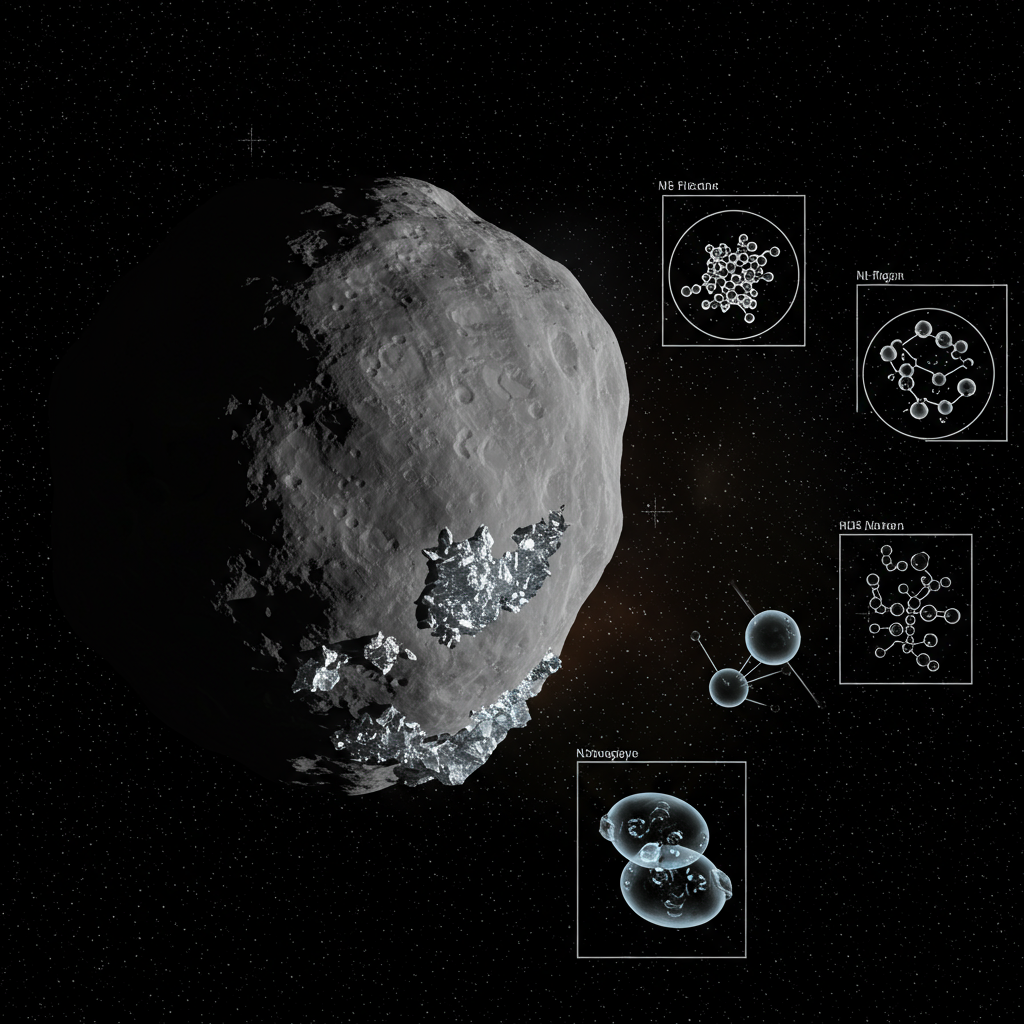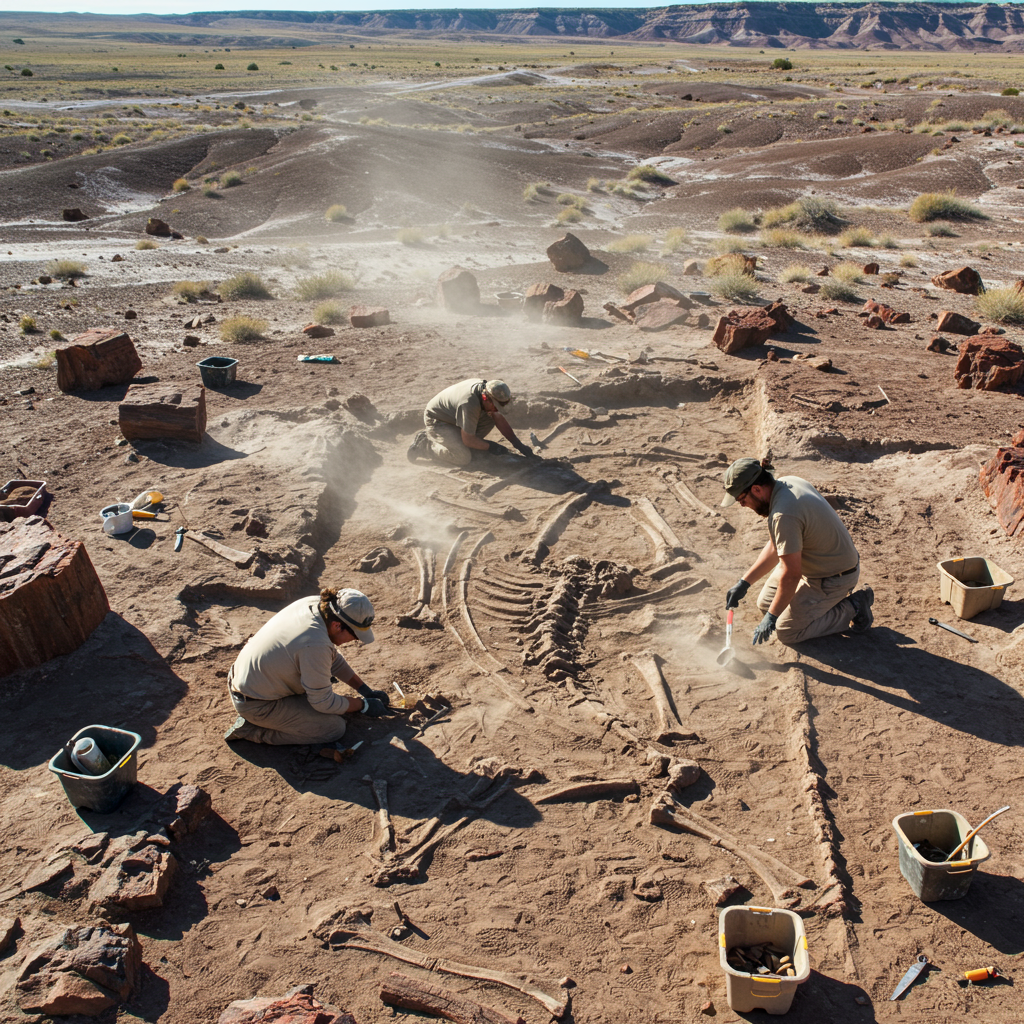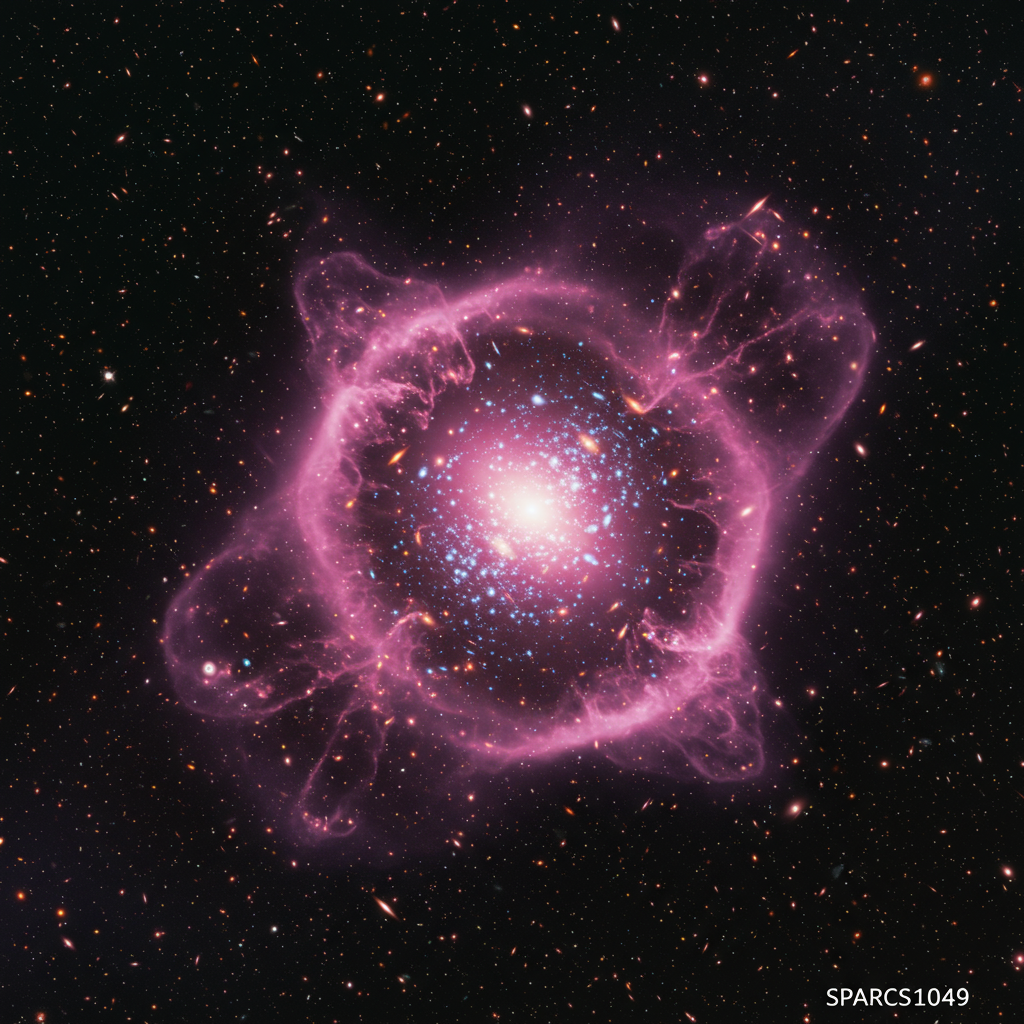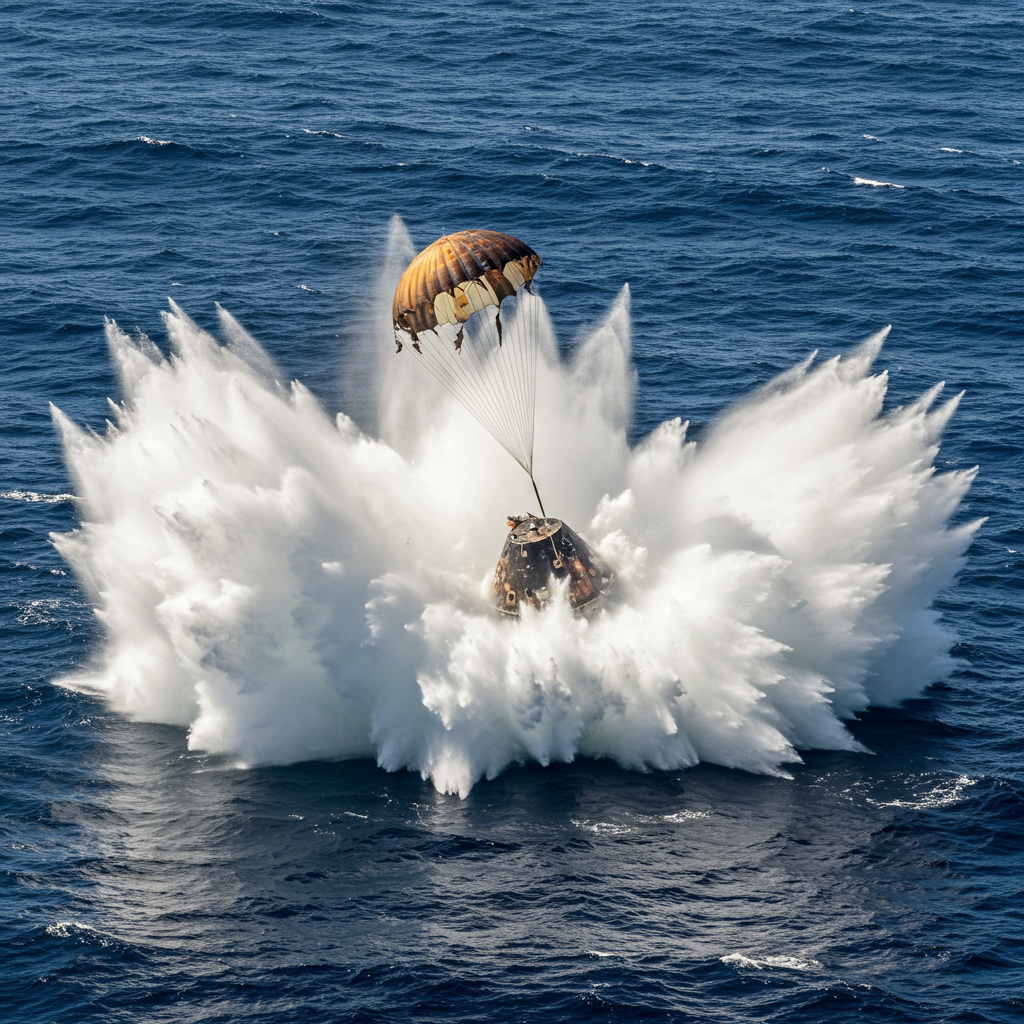The age-old mystery of how life began on Earth continues to fascinle scientists. While many theories exist, the idea that life’s building blocks, or even life itself, arrived from space – known as panspermia – remains a compelling possibility. This hypothesis often suggests comets, rich in ice, could have served as cosmic delivery vehicles.
However, a recent groundbreaking study is changing our understanding of the most common type of ice found throughout the universe. This new research directly impacts the feasibility of panspermia as the primary mechanism for life’s origin here on Earth.
Unraveling the True Structure of Space Ice
For years, scientists largely assumed that space ice, found in comets, icy moons like Saturn’s Enceladus, and the vast dust clouds where stars are born, had a simple, entirely disordered structure. This form, known as low-density amorphous ice, was thought to lack any crystalline arrangement. The extremely cold temperatures of space were believed to prevent water molecules from gathering enough energy to form the ordered patterns seen in Earth’s ice.
“Ice in the rest of the Universe has long been considered a snapshot of liquid water – that is, a disordered arrangement fixed in place,” says Professor Christoph Salzmann of UCL Chemistry, a co-author of the study. “Our findings show this is not entirely true.”
This new study, led by Dr. Michael B. Davies as part of his PhD research at University College London (UCL) Physics & Astronomy and the University of Cambridge, reveals a more complex reality. Their work indicates that space ice isn’t purely amorphous after all. Instead, it contains a significant proportion of tiny crystalline structures embedded within the disordered material. This subtle but crucial difference fundamentally alters its properties and potential roles in cosmic processes.
Simulating and Experimenting with Cosmic Ice
To understand the true nature of space ice, the research team employed a two-pronged approach involving advanced computer simulations and detailed laboratory experiments.
Dr. Davies began with computer simulations. He created virtual boxes of space ice cooled to extremely low temperatures, around -120 degrees Celsius. By simulating different freezing rates, the models produced ice structures with varying ratios of amorphous to crystalline components. Comparing these results to previous experimental data on simulated low-density space ice, the team found the closest match came from samples that were approximately 20% crystalline and 80% amorphous.
A second set of simulations further supported these findings. This time, large virtual boxes filled with ice crystals were “disordered” in the regions between the crystals. This approach resulted in structures remarkably similar to the first simulations, showing around 25% crystalline ice content. These simulations provided a strong theoretical basis for the presence of crystalline structures in seemingly amorphous space ice.
Experimental Evidence Confirms Predictions
Building on their simulation results, the scientists then moved to the lab. They created samples of low-density amorphous ice using methods designed to mimic conditions in space. One technique involved depositing water vapor onto a freezing surface, similar to how ice forms on interstellar dust grains. Another method used high-density amorphous ice that was carefully warmed.
When these laboratory-simulated space ice samples were slowly heated, providing just enough energy for molecules to rearrange and form crystals, the researchers observed something telling. The way the ice crystallized depended on how it was originally formed. This suggested that even in its low-density amorphous state, the ice “remembered” something about its earlier molecular arrangement.
This memory manifested as “six-fold” arrangements of molecules detected within the ice as it began to crystallize. A purely amorphous structure would not retain such a structural blueprint. Finding these arrangements provided strong indirect evidence that the low-density amorphous ice samples contained tiny, hidden crystals from the start.
Panspermia Theory Faces New Challenges
The discovery that common space ice contains crystalline components has significant implications for scientific theories about the origin of life on Earth, particularly the panspermia hypothesis. Panspermia proposes that life did not originate on Earth but was seeded from elsewhere in the universe, often suggesting transport via cosmic bodies like comets.
Comets are thought to be largely composed of low-density amorphous ice. In many panspermia models, these icy bodies would carry the essential chemical “building blocks” of life, such as amino acids or nucleobases, safely embedded within their structure. However, the new findings present a hurdle for this idea.
Dr. Davies explains the challenge: “Our findings suggest this ice would be a less good transport material for these origin of life molecules.” This is because a partially crystalline structure contains less internal space compared to a purely amorphous one. Think of it like trying to pack items into a box filled with some rigid objects versus one filled with entirely soft material – the soft material has more void space to fill.
The reduced space within the partly crystalline space ice means there’s less room for those vital organic molecules to be protected and transported across vast cosmic distances. While this doesn’t completely rule out panspermia – “amorphous regions” still exist where molecules could be trapped – it significantly decreases the likelihood of this ice being an efficient delivery system for life’s precursors.
Panspermia: A Complex Picture
The panspermia concept itself is multifaceted. Some versions propose the transport of simple organic molecules (“soft” panspermia), while others suggest the transport of actual living spores or microorganisms (“hard” panspermia). For panspermia to succeed, any hitchhiking life or molecules must survive several extreme hurdles: escaping a planet’s gravity, enduring the harsh vacuum and radiation of space, and surviving re-entry and impact on a new world.
Previous research, including studies by NASA, has explored the remarkable resilience of microorganisms, particularly bacterial spores, showing they can survive extreme conditions including vacuum and radiation, especially when shielded by materials like soil or rock. Survival through atmospheric re-entry and impact has also been shown to be possible for some microbes, often shielded by the outer layers of a meteoroid.
However, the new space ice study focuses specifically on the protection offered by the ice itself during the journey through space. If the internal structure is less able to securely embed and shield complex organic molecules or dormant life forms from damaging radiation over long periods, it diminishes the role of cometary ice as a primary vehicle. This doesn’t invalidate panspermia entirely, as transport within rocks ejected by impacts (lithopanspermia) or as free-floating spores are also possibilities, but it does cast doubt on the efficiency of soft panspermia via cometary ice.
Broader Implications for Science and Technology
Beyond its direct impact on the origin of life debate, understanding the true structure of space ice holds significant value across multiple scientific fields.
As the most common form of water ice in the universe, its properties influence a wide range of cosmological processes. This includes how planets form within dusty, icy disks around young stars, how matter moves through interstellar space, and even the evolution of galaxies. Knowing its atomic-level structure is crucial for building accurate models of these phenomena. Dr. Davies notes, “We now have a good idea of what the most common form of ice in the Universe looks like at an atomic level. This is important as ice is involved in many cosmological processes.”
Professor Angelos Michaelides from the University of Cambridge emphasizes the fundamental importance of water itself. “Water is the foundation of life, but we still do not fully understand it. Amorphous ices may hold the key to explaining some of water’s many anomalies.” Studying these exotic forms of ice can provide deeper insights into the behavior of water even in its more familiar liquid state.
The findings also resonate within materials science and technology. Amorphous materials, despite their lack of long-range order, have crucial applications. For example, the glass fibers used in fiber optic cables need to be amorphous for optimal data transmission. As Dr. Davies points out, removing any tiny crystals from these materials improves their performance.
Similarly, understanding the various forms and properties of amorphous ice could open doors for future space-based applications. It has been considered as a potential high-performance material for spacecraft, possibly offering radiation shielding or serving as a component in hydrogen and oxygen fuel. Research like this is vital for developing technologies that will enable deeper space exploration.
Frequently Asked Questions
What did the new study discover about the structure of space ice?
The study found that low-density amorphous space ice, the most common form of ice in the universe, is not purely disordered as previously assumed. It contains a significant proportion of tiny crystalline structures embedded within the amorphous material. This was determined using a combination of computer simulations and laboratory experiments.
How does this finding affect the panspermia theory for the origin of life?
The discovery reduces the likelihood of panspermia occurring via cometary ice efficiently transporting life’s building blocks. A partially crystalline structure has less internal space compared to a purely amorphous one, meaning there’s less room for molecules or organisms to be protected and embedded within the ice during transit. While not disproving panspermia, it suggests this transport mechanism is less effective than if the ice were entirely amorphous.
Why is understanding the detailed structure of space ice important?
Knowing the atomic structure of space ice is vital for understanding numerous cosmic processes, including planet formation, galaxy evolution, and the movement of matter across the universe. It also has implications for materials science, providing insights into amorphous materials used in technology like fiber optics and potentially for future space applications such as radiation shielding or spacecraft fuel.
Conclusion
The new research from UCL and Cambridge marks a crucial step forward in our understanding of the universe’s most abundant form of water ice. By revealing its partly crystalline nature, scientists have adjusted our view of how this ubiquitous material behaves and interacts with its environment.
While potentially making the panspermia scenario of life arriving via cometary ice less probable, this discovery offers invaluable insights into cosmology, materials science, and the fundamental nature of water itself. It underscores how seemingly small details about the structure of cosmic materials can have profound implications for everything from the origins of life to the future of space technology. Future research building on these findings will continue to refine our models of the cosmos and perhaps even help us better understand the unique properties of water on our own planet.




